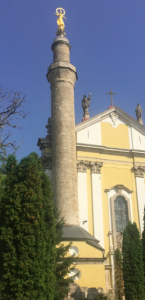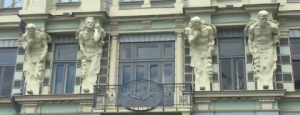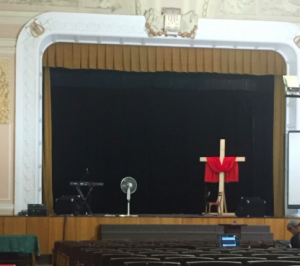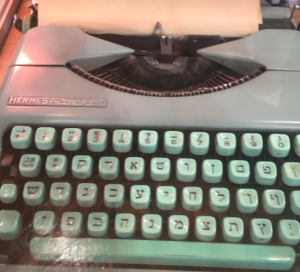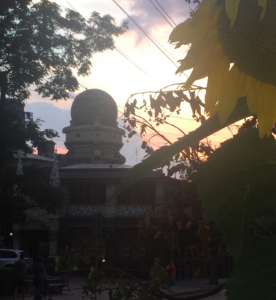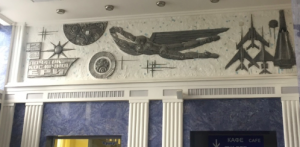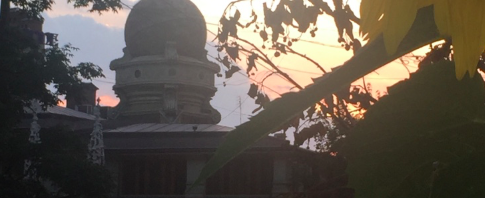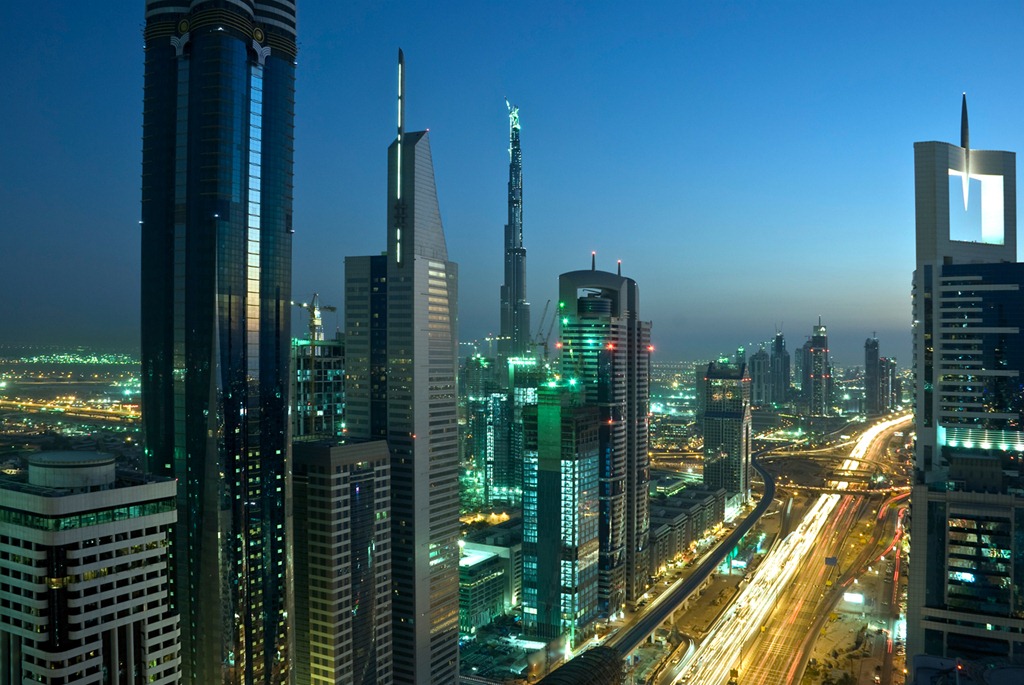I’d like to welcome you to Washington. I’d also like to welcome you to DC.
To my ear, “Washington” means the official city, the nation’s capital, the seat of power. It’s also the destination for about 20 million visitors a year, because they come to see the sites of the official city: the National Mall, the museums, the monuments, and the great buildings that house our national government.
On the walls inside the Capitol, the courts, the executive agencies, and the Pentagon, there must hang 10,000 oil portraits of former office-holders. Sometimes under a portrait of an obscure ante-Bellum Senator, you’ll see unionized teachers shaking hands with their current, conservative US rep., or teenagers in a huddle trying to figure out where they need to go next. Official Washington is a magnet for all kinds of Americans.
To my ear, “DC” means a mid-Atlantic city of about 700,000 people, plus the inner-ring suburbs where many of the residents have roots in the city proper. DC’s population is just under half African-American, and many of the most deeply rooted DC families are Black.
It’s a city of brick row houses, fall leaves crunching underfoot on a hot and humid day, official buildings shimmering in the smog at the end of long vistas, knots of people in suits with government ID’s hanging from their necks, soldiers in desert fatigues, and the Metro coasting quietly between stations with–in the summertime–payloads of interns.
There are other cities here, too. The international city of embassies, the World Bank and IMF, the global press corps, and 10,000 diplomats. The military city of the Pentagon, the Naval Hospital, myriad defense contractors, and Andrews Air Force Base–with the Naval Academy just up the road. A tech-industry hub that pays relatively little attention to politics and government. A city of scholars and artists. These different cities come together–sometimes uneasily and coolly–in places like the Metro, Nationals Park, and a summer concert at the Zoo.
Washington is a youthful city that depends on talented 20-somethings who can go “all in” for their boss, whether on a political campaign, in a newsroom, or in a tech startup. DC is full of people who came here in their 20’s to do good and ended up doing well. Now they live in spacious houses on tree-lined streets in Cleveland Park or Georgetown, but their years of greatest impact were in their youth, and even today they could get nothing done without their 20-something staffers.
Every year, a new batch of idealists arrive who say, with Alexander Hamilton in Lin-Manuel Miranda’s version, “I’m past patiently waitin’. I’m passionately smashin’ every expectation, every action’s an act of creation! … And I am not throwing away my shot.”
Like Hamilton, you can be idealistic and ambitious, your ambition spurring you to make a better world and be known for it. You have a shot; don’t throw it away.
I’d encourage you to appreciate DC, the mid-Atlantic city, with its neighborhoods and restaurants, its distinctive accents and traditions. People sometimes say that DC is a transient city, but they are thinking about politicians, diplomats, generals, and staffers. DC is also an old and stable city of school teachers, bus drivers, food workers, busboys, and a few poets.
I’d also encourage you to appreciate Washington, the seat of the republic. I know that few Americans are fully inspired by it right now. Some see Washington as a sink for their hard-won salary money and the source of regulations that impinge their liberty. Others behold a militaristic, corporate power center dominating the world, a neoliberal death star. Just four percent of Americans say they have a great deal of confidence in Congress. Most Americans also say that they distrust their fellow citizens. Since Washington represents the whole country, we each see a city that answers to a lot of other people we don’t much like
I spent my own twenty years in this city trying to be a reformer, often with anger in my thoughts and even in my voice. I understand the critiques and share some of them. Yet I would urge you to be open to the grand narrative of the official city.
Take a walk, for instance, up the steps of the Lincoln Memorial. Look from there onto the National Mall. Chained people were brought there daily to be sold across from the Smithsonian Castle until 1850. The Capitol Dome, however, was completed during the Civil War, and the crowning statue of Freedom was erected there in the same year as the Battle of Gettysburg.
Inside the temple to Lincoln, take a moment to read the Second Inaugural carved into the walls. It’s just four paragraphs long. The third and by far the longest argues that slavery “was the cause of the war.” The speech ends, “let us strive on to finish the work we are in, to bind up the nation’s wounds, to care for him who shall have borne the battle and for his widow and his orphan, to do all which may achieve and cherish a just and lasting peace among ourselves and with all nations.”
In 1963, 250,000 people stood before the Memorial at the March on Washington for Jobs and Freedom, listening not only to Dr. King’s “Dream” but also to Bayard Rustin lead a tribute to “Negro Women Fighters for Freedom,” Mahalia Jackson sing “How I Got Over,” and the grizzled civil rights veteran John Lewis give a major speech at the ripe old age of 23. The program notes from that day, saved by my friend Harry Boyte, reminded everyone, “In a neighborhood dispute there may be stunts, rough words, and even hot insults. But when a whole people speaks to its government, the dialogue and the action must be on a level reflecting the worth of that people and the responsibility of that government.” I imagine the 250,000 women and men who stood there on that day as ghosts on the Mall, still reflecting the worth of our people and still speaking eloquently to their government, which is still our government. We can stand with them.
As we have continued our common story, we’ve added to Washington’s obelisk and Lincoln’s temple vast free public museums of history, art, and industry, monuments to the fallen in several wars and to peace itself, and buildings documenting the Holocaust, Native American history and culture, and African American history and culture.
Every nation-state is problematic. It sets boundaries, excludes people, and exercises power. But a nation-state is also a tool for making the world better and for accomplishing great things together. It becomes what we make it become.
What we have made of the United States so far is quite literally etched in the stone of Washington DC. We are still building it, whether we happen to be American citizens or not, literally and metaphorically.
Young people have always played a disproportionate role. Coming here to serve is a privilege. It’s a learning opportunity. It can be fun. It puts you into the story of tragedy, crime, sacrifice, and redemption that is this country.
Hamilton did more than any founder to found Washington, even though he’s the only one without a monument on the Mall. In the musical, he sums up his life. “I wrote some notes at the beginning of a song someone will sing for me. America, you great unfinished symphony, you sent for me. You let me make a difference.”
You follow in his footsteps. Make a difference.
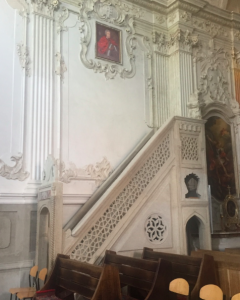 a minbar (the staircase a preacher ascends in a mosque) is preserved inside the rococo church of St Nicholas in Kamyanets-Podilsky.
a minbar (the staircase a preacher ascends in a mosque) is preserved inside the rococo church of St Nicholas in Kamyanets-Podilsky.